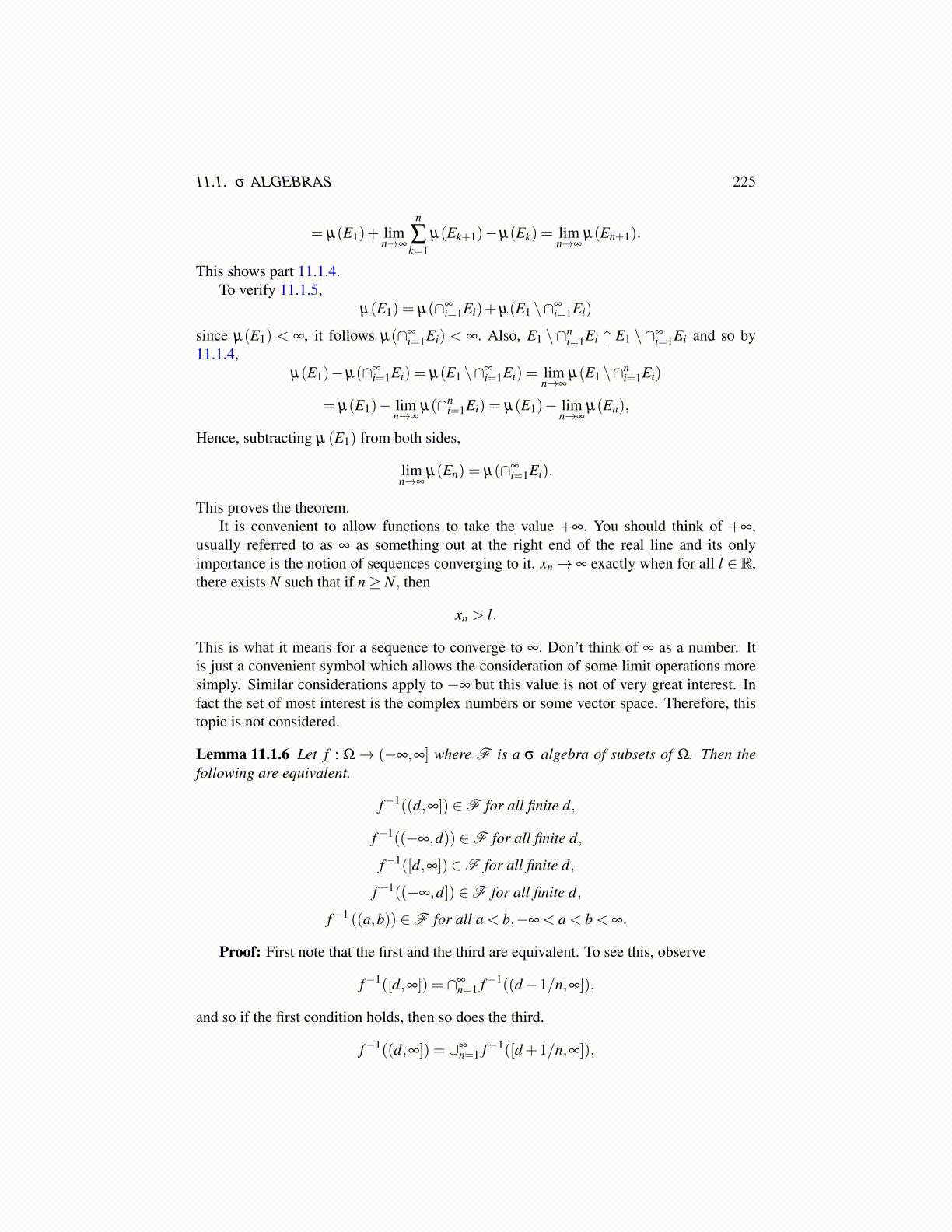
11.1. σ ALGEBRAS 225
= µ(E1)+ limn→∞
n
∑k=1
µ(Ek+1)−µ(Ek) = limn→∞
µ(En+1).
This shows part 11.1.4.To verify 11.1.5,
µ(E1) = µ(∩∞i=1Ei)+µ(E1 \∩∞
i=1Ei)
since µ(E1) < ∞, it follows µ(∩∞i=1Ei) < ∞. Also, E1 \ ∩n
i=1Ei ↑ E1 \ ∩∞i=1Ei and so by
11.1.4,µ(E1)−µ(∩∞
i=1Ei) = µ(E1 \∩∞i=1Ei) = lim
n→∞µ(E1 \∩n
i=1Ei)
= µ(E1)− limn→∞
µ(∩ni=1Ei) = µ(E1)− lim
n→∞µ(En),
Hence, subtracting µ (E1) from both sides,
limn→∞
µ(En) = µ(∩∞i=1Ei).
This proves the theorem.It is convenient to allow functions to take the value +∞. You should think of +∞,
usually referred to as ∞ as something out at the right end of the real line and its onlyimportance is the notion of sequences converging to it. xn→ ∞ exactly when for all l ∈ R,there exists N such that if n≥ N, then
xn > l.
This is what it means for a sequence to converge to ∞. Don’t think of ∞ as a number. Itis just a convenient symbol which allows the consideration of some limit operations moresimply. Similar considerations apply to −∞ but this value is not of very great interest. Infact the set of most interest is the complex numbers or some vector space. Therefore, thistopic is not considered.
Lemma 11.1.6 Let f : Ω→ (−∞,∞] where F is a σ algebra of subsets of Ω. Then thefollowing are equivalent.
f−1((d,∞]) ∈F for all finite d,
f−1((−∞,d)) ∈F for all finite d,
f−1([d,∞]) ∈F for all finite d,
f−1((−∞,d]) ∈F for all finite d,
f−1 ((a,b)) ∈F for all a < b,−∞ < a < b < ∞.
Proof: First note that the first and the third are equivalent. To see this, observe
f−1([d,∞]) = ∩∞n=1 f−1((d−1/n,∞]),
and so if the first condition holds, then so does the third.
f−1((d,∞]) = ∪∞n=1 f−1([d +1/n,∞]),